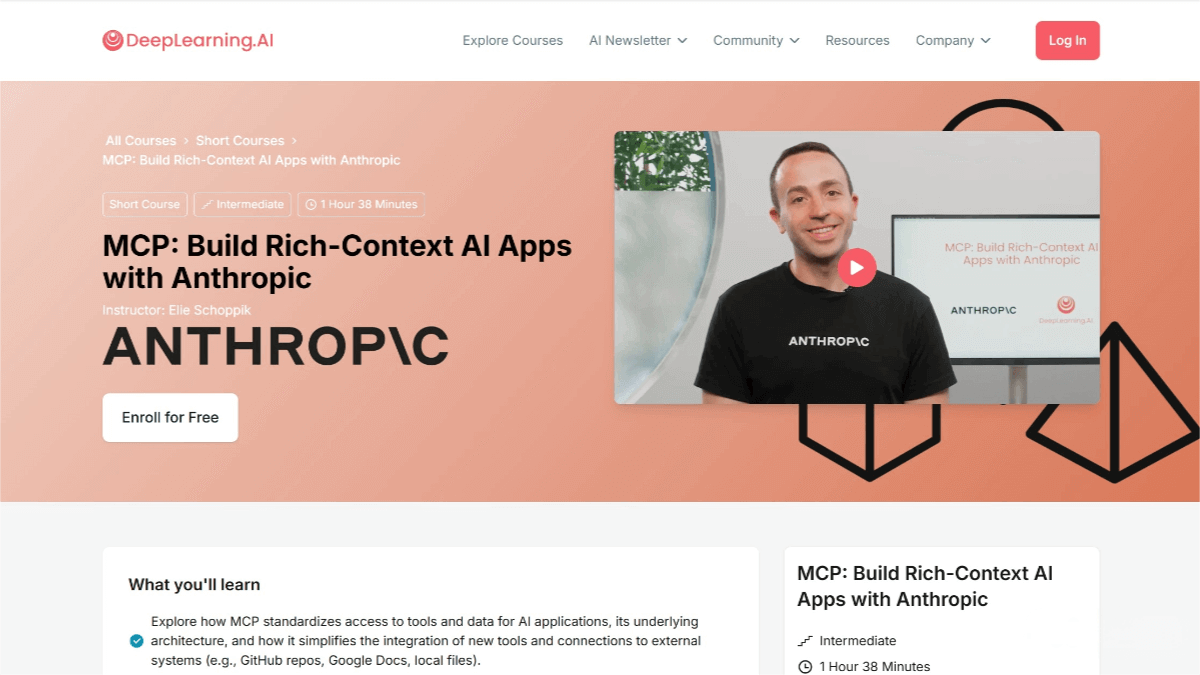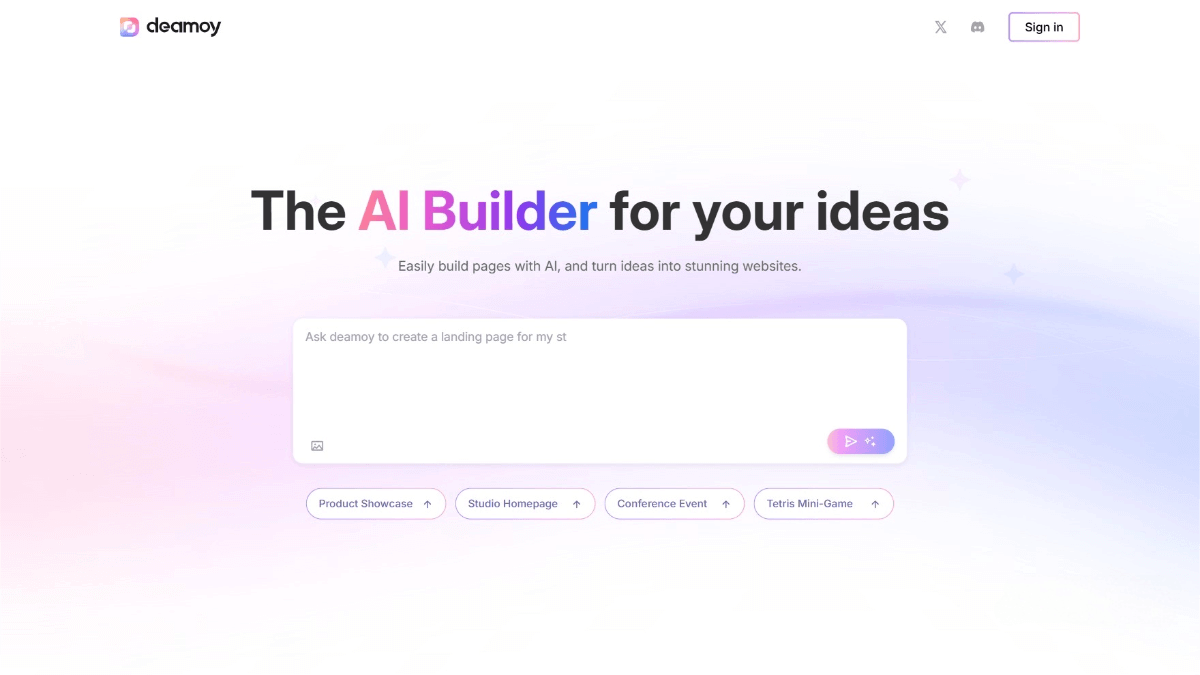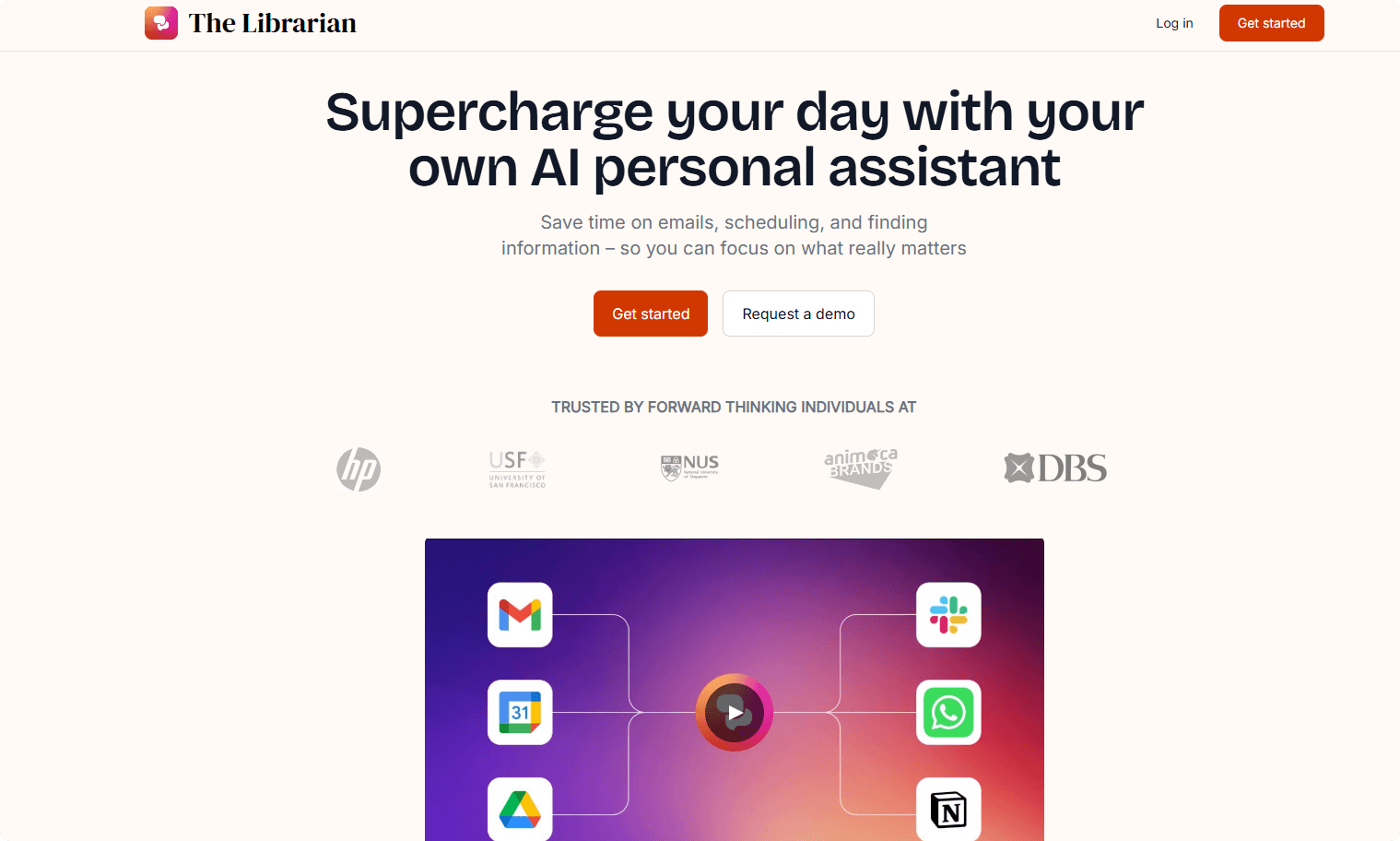Andrew Ng’s Team Releases ‘MCP: Building Context-Rich AI Applications with Anthropic’ – AI Tutorial
DeepLearning.AI Launches Online Course “MCP: Build Rich-Context AI Apps with Anthropic”
The course “MCP: Build Rich-Context AI Apps with Anthropic” is now available on the DeepLearning.AI platform. Developed jointly by Anthropic and DeepLearning.AI, it is taught by Elie Schoppik, Head of Technical Education at Anthropic. This intermediate-level course has a total duration of 1 hour and 38 minutes, featuring 11 video lessons and 7 code examples. It introduces learners to the Model Context Protocol (MCP) and provides hands-on training in its core concepts, including the client-server architecture and communication mechanisms. Participants will learn how to convert a chatbot into an MCP-compatible application, build and deploy MCP servers locally or remotely, and connect chatbots to various MCP servers.

Course Overview
-
Course Title: MCP: Build Rich-Context AI Apps with Anthropic
-
Level: Intermediate
-
Duration: 1 hour 38 minutes
-
Format: 11 video lessons, 7 code examples
-
Instructor: Elie Schoppik (Head of Technical Education at Anthropic)
-
Platform: DeepLearning.AI (in collaboration with Anthropic)
Course Objectives
-
Standardized Tool & Data Access: Learn how MCP standardizes access to tools and data in AI applications, simplifying integration with external systems such as GitHub repositories, Google Docs, and local files.
-
Build & Deploy MCP Servers: Understand how to build and deploy an MCP server that provides tools, resources, and prompts, and integrate it into AI apps (like Claude Desktop) to expand capabilities.
-
Create MCP-Compatible Apps: Construct MCP-compatible applications that host multiple MCP clients, each maintaining a one-to-one connection with an MCP server.
Course Content
-
MCP Architecture: Introduction to MCP’s client-server structure and its underlying communication protocol.
-
Chatbot Example: Code walkthrough on transforming a basic chatbot into an MCP-compatible application.
-
Creating MCP Servers: Use FastMCP to build a local MCP server and test it with MCP Inspector.
-
Creating MCP Clients: Implement an MCP client within a chatbot and connect dynamically to servers.
-
Connecting to Reference Servers: Learn to connect chatbots to Anthropic’s reference servers, such as a file system server and a web content extraction server.
-
Configuring Claude Desktop: Set up Claude Desktop to interface with your own or external MCP servers, and explore how it abstracts the underlying MCP client logic.
-
Remote Server Deployment: Deploy MCP servers remotely and test using Inspector or other MCP-compatible applications.
-
Future Roadmap: Explore MCP’s upcoming features, including multi-agent architecture, the MCP Registry API, server discovery, authorization, and authentication mechanisms.
Official Course Link
Target Audience
-
Skill Requirements: Familiarity with Python and a basic understanding of LLM prompting and application development.
-
Learning Goals: Developers seeking to build rich-context AI apps that integrate seamlessly into the growing MCP server ecosystem, reducing integration overhead.
Course Highlights
-
Hands-On Learning: Practical code examples and real implementation tasks to help learners master MCP effectively.
-
Ecosystem Integration: Focus on standardized connections between AI apps and external data/tools, reducing fragmentation.
-
Forward-Looking Perspective: Insights into the future of MCP, preparing learners to adapt to upcoming innovations.
Related Posts




